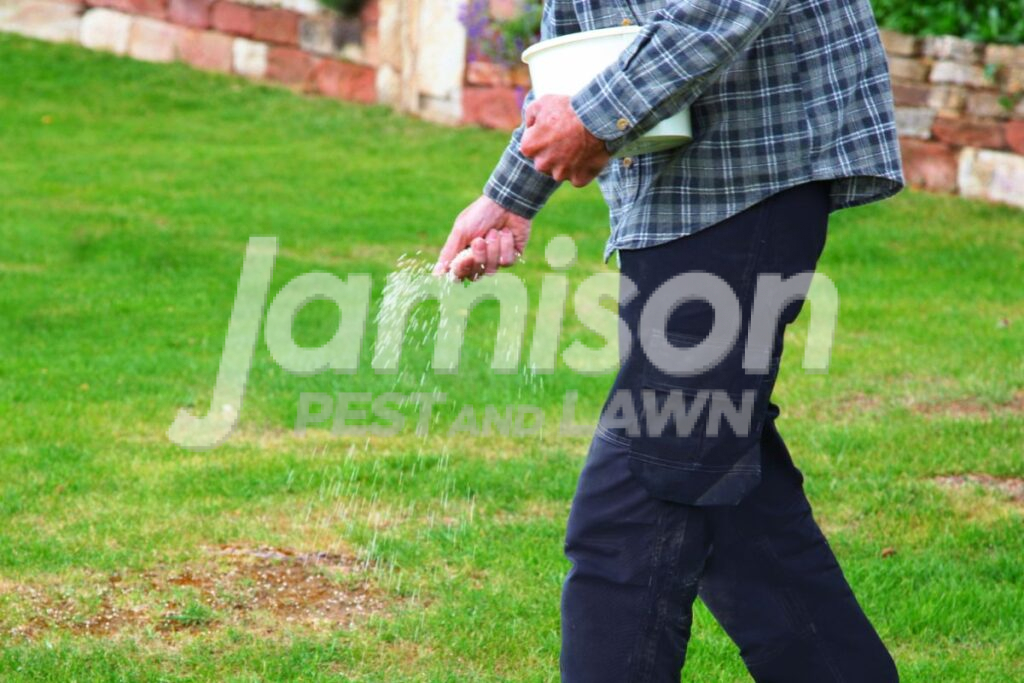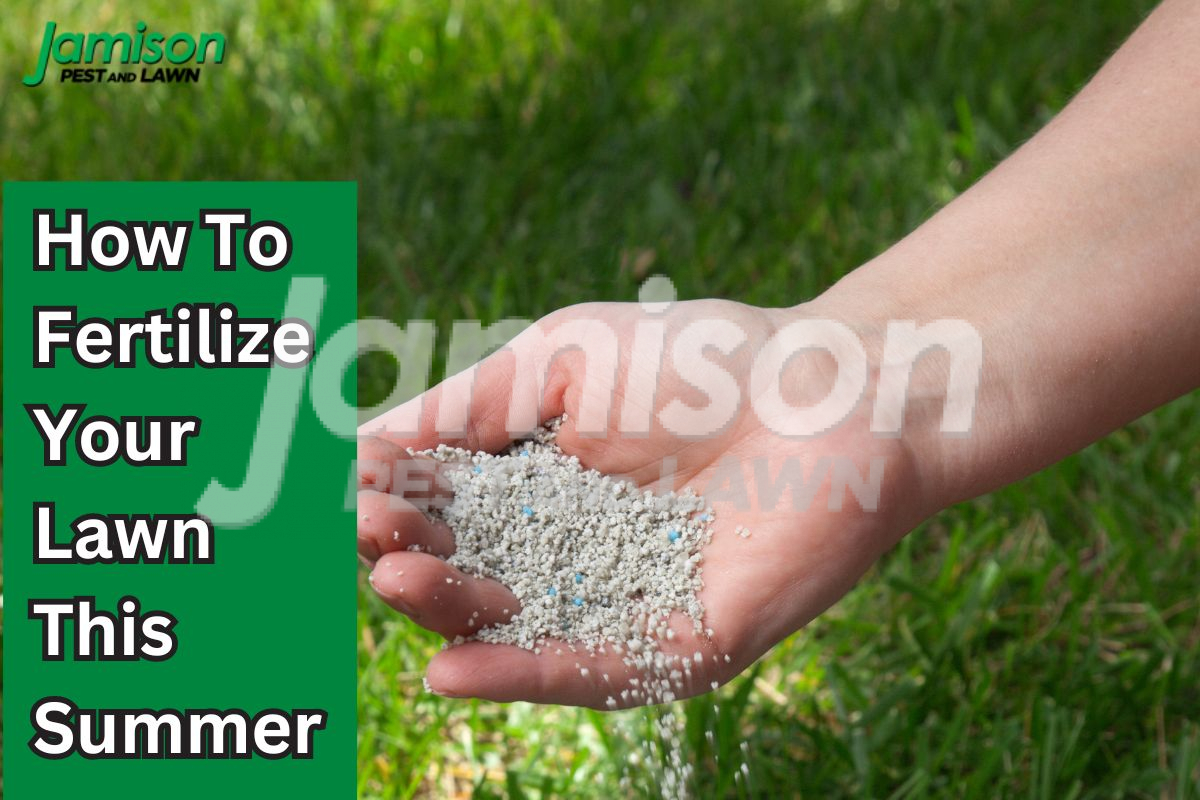As summer’s blistering heat approaches, those of us living in southeastern states like Tennessee and Mississippi need to be extra vigilant, and that includes paying close attention to our lawns. The hot, humid weather can quickly take a toll on our beloved yard if they aren’t properly cared for and nourished.
Maintaining a lush, green lawn through the summer months is possible, but it requires making fertilization a priority. When temperatures rise during the day, the roots of plants in your lawn draw more and more moisture and nutrients from the soil to survive, depleting it quickly. Without replenishing those vital nutrients, your lawn will become stressed, discolored, and vulnerable to disease and drought.
That’s why we’re here today to share some tips on how you can maintain your lawn in summer, and provide our advice on some of the best fertilizers you can use.

Why Should Fertilization Be Done Carefully?
Fertilizing your lawn in the summer can be a bit tricky, and should be done carefully in order to avoid these problems:
Heat Stress:
During the hot summer months (June, July, and August), grass can become stressed from high temperatures and limited water availability. Adding fertilizer can further stress out the grass, especially if you do not apply it correctly.
Risk of Burn:
Adding fertilizer to your lawn during the summer carries a significant risk of burning the grass. Many homeowners choose fast-acting fertilizers that are high in nitrogen and often contain salts that can damage the grass if they’re not applied correctly or if they’re used in excessive amounts. The heat of summer further amplifies this risk, increasing the chances of harming your lawn.
Increased Growth:
While some fertilizers promote growth, excessive growth during the summer can make the lawn more susceptible to stress and disease. It’s generally better to encourage slower, healthier growth during this time.
Pest Infestations
Adding fertilizer in summer can also promote the increase of weeds and pests, which thrive in warm weather. Too much fertilizer can also change the nutrient structure of your soil, which is counterintuitive to adding fertilizer in the first place.
Should I Stop Adding Fertilizer In The Summer?
Adding fertilizers to your lawn is not recommended during dormant months and during periods of extreme heat. However, you don’t have to stop using it completely. While fertilizing lawns in summer may seem counterintuitive when temperatures are high, it’s actually one of the most crucial times to supply your grass with essential nutrients.
Replenishing those nutrients through the act of fertilization provides a wealth of important benefits:
- Lush, vibrant green color – Nitrogen is key for producing tall growth and rich green pigment
- Thick, dense growth – Adequate nutrients allow grass to spread out vertically and horizontally
- Enhanced drought tolerance – Well-fed lawns can better withstand dry periods without going dormant
- Improved heat tolerance – Sufficient nutrients help grass endure summer’s heat
- Increased disease resistance – Proper fertilization results in more resilient, hardy grass plants
Tips On How To Fertilize Your Lawn In The Summer Effectively
Identify Your Grass Type
Before selecting a fertilizer, it’s crucial to identify the type of grass you have in your lawn. Different grass varieties have varying nutrient requirements, and using the wrong fertilizer can actually do more harm than good.
The two main categories of grasses are warm-season and cool-season. Warm-season grasses thrive in hot, humid climates and go dormant during the winter months. Cool-season grasses grow best in cooler temperatures and may struggle during the peak of summer heat.
Timing is Everything
One of the most important factors for successful summer lawn fertilization is getting the timing right. If you apply fertilizer too early or too late you’ll miss the prime window for grass growth and nutrient absorption.
For cool-season grasses like fescue and bluegrass, the ideal time to add fertilizer is in late spring/early summer after the grass has begun actively growing again. Applying fertilizer sometime between late April and June, depending on your local climate, will provide the nutrients needed to recover from winter dormancy.
Warm-season grasses like Bermuda or zoysia grass, have their peak growth cycle a bit later. These lawns will benefit most from fertilization in early or mid-summer, roughly May through July in the southeastern regions. The high heat of these months is when these grass varieties are thriving.
However, timing isn’t just about the type of grass you have. Your lawn’s unique nutrient deficiencies and needs based on soil quality will also impact the optimal fertilization schedule.
Create A Schedule
Most homeowners that come to us commit a common mistake, they only use fertilizers when they feel it’s required, which is something you need to avoid.
Following a fertilization schedule is key for maintaining a healthy lawn throughout the summer. This means avoiding over-fertilization as well, since too many nutrients can actually damage the grass and lead to other issues. Instead, aim for two fertilizer applications during the summer; one in early summer (late May/early June) and another in mid-summer (late July). If the need arises, you can opt for a third session later in the season too.
Focus on applying fertilizer in the cooler evening hours when temperatures are lower. This reduces the risk of the nutrients getting scorched by intense summer sun and heat.
Use The Right Fertilizers
This is one of the most important points on the list. When it comes to choosing a fertilizer for your lawn, you’ll have several options to consider. For example, you have a choice between granular fertilizers and liquid fertilizers. However, when it comes to using any fertilizer in high heat, make sure that you cut back on products that have heavy nitrogen concentrations.
During the summer, slow-release fertilizers are the ideal choice for providing a steady supply of nutrients to your lawn. These formulas are designed to break down gradually, feeding the grass over an extended period of 6-8 weeks.
Application Techniques
Proper application techniques are essential to ensure your lawn receives the nutrients it needs without causing damage or wasting fertilizer. Always follow the manufacturer’s instructions carefully, as over-fertilizing can burn your grass and lead to environmental issues.
Proper Maintenance
For fertilizers to be effective in the summer, proper lawn maintenance is essential. This includes mowing at the right height for your grass type, providing adequate water through drought periods, and aerating the lawn to allow nutrients to penetrate the soil.
Which Is The Best Summer Lawn Fertilizer For Your Lawn?
The three main nutrients found in most fertilizers are nitrogen, phosphorus, and potassium, often referred to as N-P-K. As we discussed earlier, you may want to look for slow or controlled-release fertilizers. Here are some of the best summer lawn fertilizers in the market:
- The Andersons 16-4-8 Fertilizer
- Yard Mastery 7-0-20 Stress Blend Fertilizer
Finding Lawn Maintenance Hard? Jamison Pest and Lawn Can Help!
Summer lawn fertilizer is crucial for maintaining a lush, healthy, and vibrant green appearance. But all this will require time, precision, and expertise. If you are finding it hard to manage your lawn, it’s best to ask for expert help from the team at Jamison Pest and Lawn.
We offer premier lawn care and maintenance services in Memphis and the surrounding areas of Tennessee. We use the best natural fertilizers so that your lawn remains beautiful, not only in summer but throughout the year. Contact us today at (901) 452-1505 to learn more.




